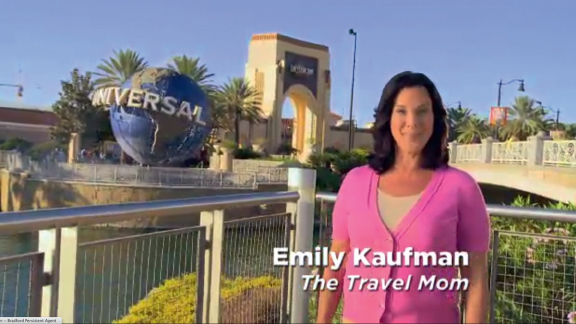The Filmmaking Path
Whether you are accomplishing your class project in two days for no budget or spending two years and $200 million making a studio blockbuster, you will need to follow the same basic path in taking your initial idea from your brain to the printed page to a polished movie that an audience can watch and, if you did your job right, relate to. Logistics, details, and nuances will grow and shrink in importance during a project and from project to project depending on a host of factors (see Business Smarts: Taking Care of Business), but this basic filmmaking process will be the key to getting you where you want to go.
Congratulations, You Are a Movie Producer!

If you glance at the table of contents, you will see there is no separate chapter on producing. Although we discuss many of the producer’s managerial tasks throughout the book and in these Producer Smarts sections, we do not focus specifically on this one job alone. Why not? Our reasoning is that a producer needs to know about every aspect of filmmaking; thus, every chapter in this book is, to a degree, a producing chapter. At the end of the day, the producer bears final responsibility for all business and creative aspects of a movie. In this class, although you may not have anyone who is officially credited as a “producer,” the functions that a producer handles must still get done, whether you are making a one-minute class assignment, a short film, or a full-length feature. Here are some basic considerations:
 Calculate your limitations. How long can the film be? What resources are available in terms of time, budget, equipment, actors, locations, costumes, and props?
Calculate your limitations. How long can the film be? What resources are available in terms of time, budget, equipment, actors, locations, costumes, and props? Plan the production carefully to achieve the best creative outcome by making sure that the script is in good shape, that everyone involved is properly suited for his or her role, and that there is a reasonable schedule.
Plan the production carefully to achieve the best creative outcome by making sure that the script is in good shape, that everyone involved is properly suited for his or her role, and that there is a reasonable schedule. Manage the day-to-day, or minute-by-minute, operation of the shoot by making sure that everything—and everyone—is ready and that there is a list of priorities, so that if something needs to be cut or plans change, the movie will still work without it, and if something needs to be added, you will have a plan for how you are going to do it.
Manage the day-to-day, or minute-by-minute, operation of the shoot by making sure that everything—and everyone—is ready and that there is a list of priorities, so that if something needs to be cut or plans change, the movie will still work without it, and if something needs to be added, you will have a plan for how you are going to do it. Be a supportive friend in the editorial and finishing process by verifying that there are resources at hand and by being an adviser on creative decisions.
Be a supportive friend in the editorial and finishing process by verifying that there are resources at hand and by being an adviser on creative decisions. Share the film with a representative sample of the audience as early as possible, to get an objective reaction, so that the director and editor still have time to improve it before the deadline.
Share the film with a representative sample of the audience as early as possible, to get an objective reaction, so that the director and editor still have time to improve it before the deadline. Make sure the film is screened under optimum conditions—in an appropriate setting and for the right audience.
Make sure the film is screened under optimum conditions—in an appropriate setting and for the right audience. Support your team creatively and emotionally throughout the process.
Support your team creatively and emotionally throughout the process.
This journey is the focus of this textbook—not only identifying the steps you need to take but also examining how you can logically go about taking them in a creative and meaningful way. Loosely speaking, the basic components of a movie include recording and combining for eventual display the following elements:
 Images, including the use and manipulation of light and darkness
Images, including the use and manipulation of light and darkness Movement
Movement Sound
Sound Passage of time
Passage of time Sequences positioned in strategic order to tell the filmmaker’s intended story
Sequences positioned in strategic order to tell the filmmaker’s intended story Composition of the images with additional elements and manipulation to enhance emotion, create worlds, increase attention, please the senses, and improve continuity of the story3
Composition of the images with additional elements and manipulation to enhance emotion, create worlds, increase attention, please the senses, and improve continuity of the story3
As you have probably guessed, however, there is a lot more to it than these simple descriptions indicate, which is why we have broken down these lessons in the following ways, designed to direct you down this creative path. You will need to stop at various way stations along the road and plant your flag before you can move safely and effectively to your next milestone.

The Wolf of Wall Street (2013)

Training video

Promotional video
You might work in the film industry in any number of capacities throughout your career: on a major motion picture, training video, or promotional video, among other possibilities.
 START A LIBRARY
START A LIBRARY
Start a film library—but don’t just include films. Actively search for, analyze, learn from, and seek to be influenced by any form of moving-image media that impresses you: movies, television shows, commercials, music videos, web videos, industrial videos, animation, ride films, museum pieces, montages, and so on. Collect this material when you can, organize it into a library, and use your growing library as a tool to both inspire and teach you techniques or concepts as you launch your filmmaking career. You may find yourself turning back to this library to find inspiration when your creative process stalls.
 Concept and Preparation: Part One represents the first stop in the journey. Once you’ve figured out what story you want to tell, you need to develop the idea, develop the characters and plot points, and transform it into a workable screenplay. After that, you need to learn the basic skills of directing and managing a production so that you can launch into preproduction and beyond, starting with the crucial phases of conceptualizing and designing the movie you want to make, and determining an action plan and budget of how you are going to make it.
Concept and Preparation: Part One represents the first stop in the journey. Once you’ve figured out what story you want to tell, you need to develop the idea, develop the characters and plot points, and transform it into a workable screenplay. After that, you need to learn the basic skills of directing and managing a production so that you can launch into preproduction and beyond, starting with the crucial phases of conceptualizing and designing the movie you want to make, and determining an action plan and budget of how you are going to make it. Image and Sound: The chapters in Part Two are designed to teach you the basic technical and creative skills you will need to launch the project into production, so that you can capture the images and sounds necessary to tell your story. Note that we use the word necessary—it will not be enough to simply learn how to use a camera or sound recording system. You will need to learn to use those skills strategically to tell your story. That means developing a keen understanding of how to use your camera, lighting tools, and sound-capture tools to acquire the specific elements required for your story. We have broken the camera and lighting lessons into two chapters each—one to teach you basic technical skills, and the other to teach you basic creative skills. The last chapter of Part Two covers sound.
Image and Sound: The chapters in Part Two are designed to teach you the basic technical and creative skills you will need to launch the project into production, so that you can capture the images and sounds necessary to tell your story. Note that we use the word necessary—it will not be enough to simply learn how to use a camera or sound recording system. You will need to learn to use those skills strategically to tell your story. That means developing a keen understanding of how to use your camera, lighting tools, and sound-capture tools to acquire the specific elements required for your story. We have broken the camera and lighting lessons into two chapters each—one to teach you basic technical skills, and the other to teach you basic creative skills. The last chapter of Part Two covers sound. Production Glue: In Part Three, we examine the crucial postproduction process of editing, also in two chapters: the myriad of technical skills necessary to be a good editor and, more importantly, the many ways you can advance your storytelling agenda by creatively weaving together the elements you have filmed or otherwise created to make a seamless whole. In the modern digital-filmmaking world, postproduction processes involving visual effects and animation continue to grow in importance, adding new and improved ways for filmmakers to combine real and synthetic elements with image and sound capture, as well as the editing process. We examine many of these processes in the last chapter of the section.
Production Glue: In Part Three, we examine the crucial postproduction process of editing, also in two chapters: the myriad of technical skills necessary to be a good editor and, more importantly, the many ways you can advance your storytelling agenda by creatively weaving together the elements you have filmed or otherwise created to make a seamless whole. In the modern digital-filmmaking world, postproduction processes involving visual effects and animation continue to grow in importance, adding new and improved ways for filmmakers to combine real and synthetic elements with image and sound capture, as well as the editing process. We examine many of these processes in the last chapter of the section. Filmmaking and Beyond: Part Four centers on the fact that your filmmaking job is not done once your film has been edited. We explore options you might pursue to get your film in front of audiences so that you can establish that core relationship that makes your movie a success: the bond between your story and the audience watching it. To do this, you need a level of understanding of film marketing and distribution, as well as a look at the many resources available to you for learning more about filmmaking and the people, tools, skills, and career options within this unique industry—all topics we will leave you with before this course is finished.
Filmmaking and Beyond: Part Four centers on the fact that your filmmaking job is not done once your film has been edited. We explore options you might pursue to get your film in front of audiences so that you can establish that core relationship that makes your movie a success: the bond between your story and the audience watching it. To do this, you need a level of understanding of film marketing and distribution, as well as a look at the many resources available to you for learning more about filmmaking and the people, tools, skills, and career options within this unique industry—all topics we will leave you with before this course is finished.
 WHAT MADE THE MOVIE?
WHAT MADE THE MOVIE?
What was the last film you saw? Using it as an example, select one particular aspect of the filmmaking work, such as editing, music, cinematography, costume design, or location choices. In a short paper, give your opinion on how this particular discipline contributed, or did not contribute, to the overall success of the film, and why. Later, after going through the specific chapter and corresponding lessons in class on that discipline, revisit your essay, and see if your views have either changed or evolved.
On the subject of careers, it is worthwhile as you go through this course to understand that there are a myriad of potential career choices within the larger film industry, and only a small percentage of them directly involve making movies. There are commercials, music videos, corporate videos, training videos, web videos, interactive videos, video games, apps for mobile devices, and lots more to choose from. And within these areas, there are disciplines and subdisciplines and related and semirelated areas. In our concluding chapter, we offer additional insight on some of these areas and potential career choices, leaving out those categories that do not directly involve the physical act of making a film or video, such as food, transportation, safety, and accounting.
But whatever direction you choose to go in, having a solid overview of the entire filmmaking path can only help you. These are highly transferrable skills that can fit into various aspects of your life. Enjoy the journey that begins when you turn the first page on the path we have discussed. The cool thing about filmmaking is that you never know exactly what you will discover when you get to the end of the path—with one exception: whatever it is, it will be your own creation.
Taking Care of Business

As you dive into your film education, we will continually emphasize the joys of this creative form of expression. However, as previously noted, we will also be covering a host of managerial tasks. Now is a good time to take note of the fact that linked inexorably to these managerial tasks are various business-related issues that pertain to film productions of all sizes and shapes.
Even those business-related tasks that will not particularly impact your early student efforts are ones that, at some point in your film education, you will need to have a basic awareness about. If you move on to work in some capacity in the film industry, one or more of these issues could become central to your work. Therefore, periodically in this book we will address some of these business issues; explain why they are important; and discuss the fundamentals of what you need to know to make sure to protect yourself, your work, your crew, your equipment, and the environment in which you will be working.
For now, we want you to have a heads-up that this course is not only about your creative vision, making your masterpiece, and following your filmmaking dreams. That certainly can be the place you end up if you pursue your film education with the right mix of brains and passion, but the business side of this creative work needs your attention also. Indeed, one of the most important immediate challenges you will face as film students involves figuring out ways to separate and balance the creative and business sections of your brain so that both get proper attention and work in harmony to achieve the greater goal that lies before you: learning the fundamentals of filmmaking.
Filmmaker’s Emergency Kit

 A good set of headphones. Speakers on a laptop or mobile device are not very good. To experience any movie well, you need to hear it in its full glory, and so you need quality headphones.
A good set of headphones. Speakers on a laptop or mobile device are not very good. To experience any movie well, you need to hear it in its full glory, and so you need quality headphones. Still cameras and audio and video recorders. Whether on your phone or separate devices, these allow you to record reference images and sounds wherever you go as you begin to develop student films.
Still cameras and audio and video recorders. Whether on your phone or separate devices, these allow you to record reference images and sounds wherever you go as you begin to develop student films. A subscription to a streaming service like Netflix or a DVD movie collection. “Classics” are classic for a reason; they contain a creative storehouse of filmmaking knowledge. The more you experience the vast creative library of movies, the better you will be as a filmmaker yourself, as you discover your own preferences.
A subscription to a streaming service like Netflix or a DVD movie collection. “Classics” are classic for a reason; they contain a creative storehouse of filmmaking knowledge. The more you experience the vast creative library of movies, the better you will be as a filmmaker yourself, as you discover your own preferences. IMDB.com and other informational and movie websites. IMDB lists credits for almost every movie that has ever been released in the United States. Likewise, the-numbers.com or boxofficemojo.com provides box office performance information.
IMDB.com and other informational and movie websites. IMDB lists credits for almost every movie that has ever been released in the United States. Likewise, the-numbers.com or boxofficemojo.com provides box office performance information.